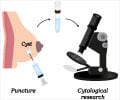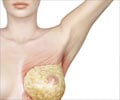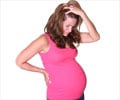About
Breasts are a woman’s assets! It lends her beauty, enhances her feminity and compounds her sexuality.
The breast comprises of several glands and ducts that lead to the nipple and the surrounding areola.
Hormonal changes during puberty cause the ducts to grow and increase the fat deposits in the breast tissue. The glands that produce milk, known as the mammary glands, are connected to the breast surface by the lactiferous ducts that are filled with milk during lactation.

Breast changes are common in women. From the time a girl develops breasts at the time of puberty, until she reaches menopause, various changes take place in her breasts. These changes occur especially during her monthly periods, pregnancy or, even, as apart of ageing.
Even normal structures in the breast can give a lumpy feeling. Lumps are chanced upon during self-exam or unexpectedly during medical exam. Most of the breast lumps are normal and due to hormonal changes.
Breast cancer is one of the leading causes of cancer-related deaths in women across the word. Death from breast cancer is currently declining possibly due to earlier detection and better screening methods and improved treatments.
Keeping the threat of breast cancer in mind every lump should be medically evaluated.

Breast lumps - Causes
There are several causes for breast lumps. Some of the causative factors are harmless, while others may be painful and even life-threatening.
Common causes of breast lumps include infections, injuries or benign growths.
Let us evaluate some of the causes a little further:
a) Infections
Infections of the breast known as mastitis is more common in women who are lactating (breastfeeding). The skin of the areola (nipple region) in these women cracks during nursing. Bacteria can enter through these cracks and cause infections, which may be seen as lumps.

b) Injuries
Trauma-inflicted breast injuries can cause tiny blood vessels to rupture leading to localized bleeding inside the breast. The resulting hematoma may appear as a lump. Trauma can also lead to fat necrosis when the fat cells in the breast tissue are damaged. This too can appear as a lump in the breast.
c) Benign Lumps
Some benign breast lumps are usually either due to:
- Fibroadenomas (non-cancerous growth)
- Cysts (fluid–filled sacs in breast tissue)
- or due to Fibrocystic changes.
Symptoms of Breast Cancer
The symptoms of breast cancer are:
- Painless breast lumps
- Nipple discharge
- Inflammation of the skin on the breast
These signs are not exclusive to breast cancer; other conditions will have to be ruled out.
Pain is not a common sign of breast cancer although all women with pain in the breast are concerned about cancer. Only about 6% of women with breast cancer experience pain as their first symptom of cancer.
Breast Lumps and Cancer Risk
The chance that a lump could be cancerous increases with:
Age - The older a woman is, greater are her chances of the lump turning cancerous
Family History - 5-10% of breasts cancers are inherited with mutations in the oncogene BRCA 1 and 2
Radiation treatment - Radiation in the chest area for other cancers can increase a person’s chances of getting breast cancer.
Breast Lump Screening
Physical Examination - A manual examination helps to estimate the location of the lump so that other diagnostic exams can focus on that area. A physical exam is not very effective if it is not followed up with other exams.
Mammogram - If a lump is detected then it is subjected to a diagnostic test called mammogram. This helps to detect 90% of breast cancers. However if the test is negative, despite the lump, a biopsy has to be carried out.
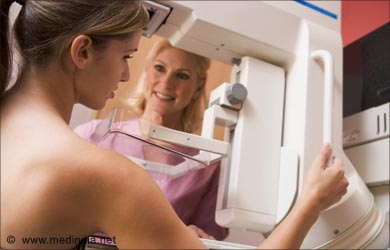
Ultrasound - This is another useful tool to differentiate between a breast lump and a benign cyst.
Magnetic Resonance Imaging (MRI) - Is an imaging test that evaluates breast lump. However it is not as effective as mammography in identifying cancers, as it cannot detect the presence of calcium deposits in breast tissues.
Biopsy - One sure way of diagnosing cancer is through tissue sampling (biopsy) technique. There are several ways to carry out a biopsy. One method is the fine needle aspiration (FNA) where a hollow needle is inserted into the focused area and some tissue sample is removed through the needle. The procedure may be done by feeling the lump or with the help of an ultrasound or mammogram. Depending upon the size and location of the breast lump and the medical history, a surgical biopsy (using either local or general anesthesia) may be carried out to remove some tissue from the lump.
Breast Lumps Treatment
Lumps due to infection are treated with warm compresses and antibiotics.
- Lumps due to Abscess - Requires draining by a doctor and treatment with antibiotics.
- Fibroadenomas - Lumps due to fibroadenomas have to be removed.
- Breast pain (mastodynia) is a common problem in women. If a lump (cancerous or non -cancerous) is ruled out, and if the pain interferes with a woman’s life, then she may be treated with oral contraceptives or other medications.
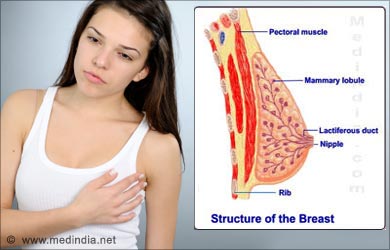
- Lumps due to fibrocystic changes - Doesn’t require medication or surgery.
- Malignant breast lumps (breast cancer) - requires immediate treatment, which often depends on the type of cancer detected, its size, and its location. Usual modes of treatment are surgery and radiation, along with medications.






